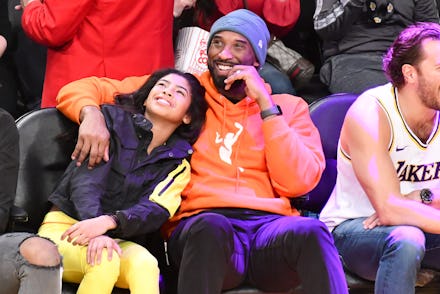A new California law attempts to address the internet's obsession with gruesome images

The death of Kobe Bryant, his 13-year-old daughter Gianna, and seven other adults and children in a helicopter crash in Los Angeles in January was the tragedy that heralded the start of a dark year for many people. In the aftermath, the basketball legend’s widow, Vanessa Bryant, said her grief was compounded by reports that graphic photos of the victims were circulating amongst law enforcement, taken by first responders at the scene of the accident. "Mrs. Bryant feels ill at the thought of strangers gawking at images of her deceased husband and child and she lives in fear that she or her children will one day confront horrific images of their loved ones online," her lawsuit filed against the LA County sheriff’s office states.
In response to the photo scandal, California Governor Gavin Newsom signed new legislation into law on Monday: it’s now a crime for first responders to take unauthorized photos of deceased individuals at the scene of an accident or crime. Starting January 1, it’ll be a misdemeanor with fines up to $1,000 per offense to take such photos for any purpose other than official law enforcement business.
The necessity of such a law might be surprising to some people. It seems like common human decency to refrain from photographing the deceased at the scene of an accident, whether they’re famous or not. But it’s also not terribly shocking to learn that these incidents are fairly common in the digital age, when anyone with a smartphone and internet access has the capability to capture and disseminate grisly images of someone’s death.
The murder of rapper XXXTentacion in 2018 is another awful example. The 20-year-old was carjacked and shot multiple times in the neck in broad daylight outside of a motorcycle and watercraft dealership in south Florida. In the aftermath of the shooting, images of XXXTentacion’s body, slumped in the driver’s seat of his BMW, circulated on social media. During the trial of four men charged with his murder, the court released CCTV footage of the moment XXXTentacion was killed, which was also shared widely on the internet.
The gruesome, tasteless photos of the bodies of Bryant and his daughter never made it online, thankfully. When LA County Sheriff Alex Villanueva learned that eight of his deputies either took or shared graphic images from the scene, he ordered them deleted. "That was my number one priority, was to make sure those photos no longer exist," Villanueva told NBC News. "We identified the deputies involved. They came to the station on their own and had admitted they had taken them and they had deleted them. And we're content that those involved did that." However, Vanessa Bryant isn’t satisfied with the sheriff’s solution and called it a “cover-up” of misconduct in her lawsuit, noting copies of the photos could still exist.
When documentation of a tragedy exists, it’s hard not to feel compelled to witness it. Irrefutable evidence makes awful news more believable somehow, spurring us to action — whether by just launching us into the grieving process or by making us angry enough to change things. Consider the video of George Floyd, depicting a police officer kneeling on his neck until he passed out and later died in custody. The clip spread like wildfire on social media, igniting sustained, nationwide protests against police brutality. But the viral video also disseminated great pain. Activists, psychologists, and members of the Black community begged people to scrub the clip from their timelines.
"Seeing these images over and over can result in things like anxiety, fear, anger, worthlessness, humiliation, interpersonal sensitivity, traumatization, feeling triggered — all of these things that we would typically really associate with something like a traumatic disorder," psychiatrist Danielle Hairston, president of the American Psychiatric Association's Black Caucus, told Insider.
The photos of the crash that killed Kobe Bryant and the video capturing George Floyd’s final moments emerged out of very different circumstances. The latter was filmed as documentation of police violence against Black people. Far shallower instincts probably led the officers responding to the Bryant tragedy to snap photos of the deceased basketball star. I imagine a “nobody’s ever gonna believe I was here for this” vibe. And to be clear, that doesn’t excuse what they did. Far from it. But it helps explain why the new legislation in California is necessary, since nothing is inherently off-limits online — even broadcasting images of death.